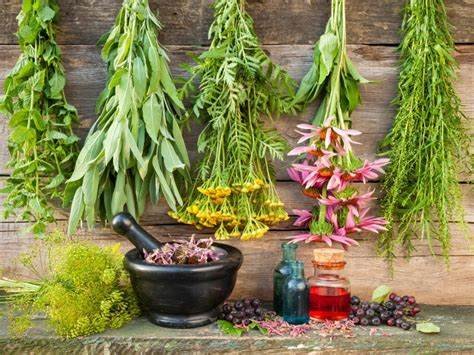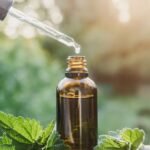Growing Medicinal Plants in Your Garden
Growing medicinal plants in your garden can be both a rewarding and practical way to embrace natural health remedies. From soothing teas to topical treatments, many medicinal plants are easy to grow and can offer significant health benefits. Whether you’re interested in boosting your immunity, managing stress, or addressing common ailments, cultivating these plants in your garden allows you to access healing herbs right at home. Here’s a step-by-step guide to help you get started.
1. Choosing the Right Medicinal Plants
The first step in growing medicinal plants is choosing the right ones for your needs. There are countless herbs with medicinal properties, but some are easier to grow than others. Here are a few popular options for beginners:
- Lavender: Known for its calming effects, lavender is great for stress relief and insomnia.
- Peppermint: This herb is often used to soothe digestive issues and headaches.
- Chamomile: Ideal for making relaxing teas that can aid in sleep and digestion.
- Echinacea: Known for boosting the immune system and helping fight off colds.
- Aloe Vera: This plant is excellent for treating burns, skin irritations, and minor cuts.
Select plants based on your specific health goals and your local climate. Ensure that the plants you choose will thrive in your garden’s conditions.
2. Planning Your Garden Space
Once you’ve selected your medicinal plants, plan out your garden. Most medicinal herbs prefer a sunny spot with well-drained soil. Consider the space each plant will need as some may spread more than others. You can plant herbs in separate beds or integrate them into your existing garden. For easier access, you may also consider growing them in containers on a balcony or porch.
Be mindful of the needs of each plant in terms of light, water, and soil type. For example, lavender thrives in dry, well-drained soil, while mint prefers a bit more moisture.
3. Planting and Caring for Your Medicinal Herbs
Planting your medicinal herbs requires careful attention to the needs of each species. Most herbs are relatively easy to care for, but they do have specific requirements:
- Soil Preparation: Before planting, enrich your soil with compost or organic matter to ensure it’s nutrient-rich. Good drainage is essential for preventing root rot.
- Watering: Most herbs prefer moderately dry conditions, so avoid overwatering. However, new plants may need more frequent watering until they become established.
- Sunlight: Most medicinal plants prefer full sunlight (around 6 hours of direct sun per day), so choose a location in your garden that gets ample light.
- Pruning: Regular pruning can encourage healthy growth and prevent plants from becoming too leggy. For herbs like mint, pruning also helps control their spread.
4. Harvesting Your Medicinal Plants
Harvesting medicinal plants at the right time is crucial to preserving their potency. The best time to harvest is usually just before the plant flowers, as this is when the medicinal compounds are most concentrated.
- For Leaves: Harvest the leaves in the morning, after the dew has dried but before the sun becomes too hot. Use sharp scissors or pruning shears to avoid damaging the plant.
- For Flowers: Pick flowers when they are fully bloomed and before they begin to fade. This ensures the best medicinal properties.
- For Roots: If you’re harvesting roots, do so in the fall after the plant has finished its growth cycle.
Dry the herbs by hanging them upside down in a cool, dark place or using a dehydrator. Once dried, store them in airtight containers to preserve their potency.

5. Using Your Medicinal Plants
Once you’ve harvested and dried your herbs, there are countless ways to use them:
- Teas: Steep the leaves, flowers, or roots in hot water to create soothing teas.
- Tinctures: Use alcohol to extract the medicinal properties of your herbs for long-term storage.
- Ointments and Salves: Make topical treatments by infusing herbs in oils like olive or coconut oil, which can be applied to the skin for healing.
- Essential Oils: Some herbs, like lavender and peppermint, can be distilled into essential oils for aromatherapy or topical use.
Make sure to educate yourself on the specific uses of each plant to maximize their benefits.
Conclusion
Growing medicinal plants in your garden can be an enriching experience, offering easy access to natural remedies and fostering a deeper connection to the healing power of nature. With the right care and attention, you can cultivate a thriving garden that not only enhances your well-being but also contributes to sustainable living. Whether you’re seeking relief from common ailments or looking to create natural remedies for your family, medicinal herbs are a valuable addition to any home garden.



